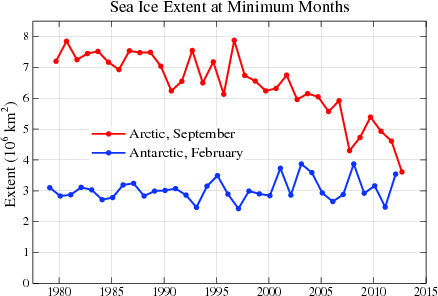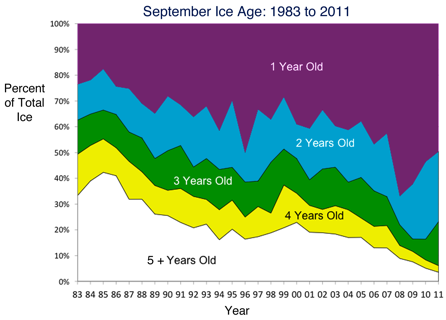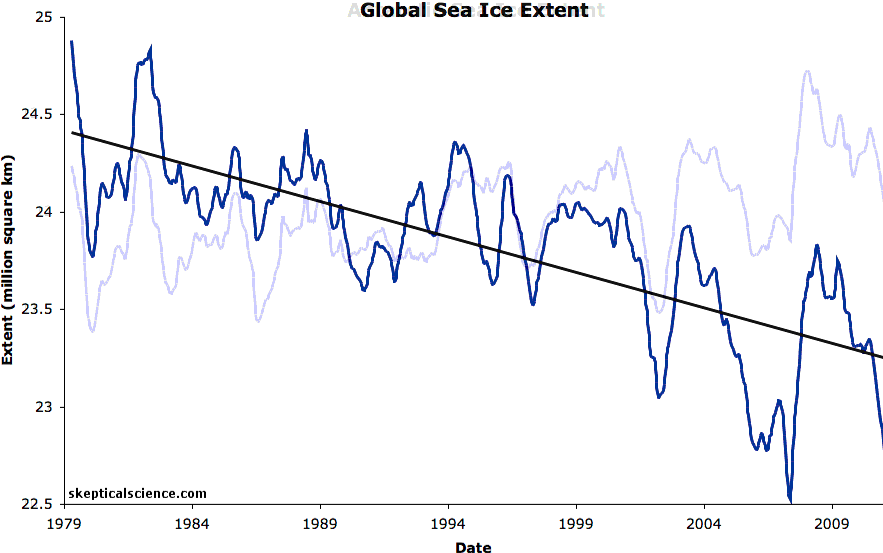 Arguments
Arguments
 Software
Software
 Resources
Comments
Resources
Comments
 The Consensus Project
The Consensus Project
 Translations
Translations
 About
Support
About
Support


Latest Posts
- Skeptical Science New Research for Week #49 2025
- Climate Adam & Dr Gilbz - Paris Climate Agreement At 10: Did It Do Anything?
- Fact brief - Does the recent slowdown in Arctic sea-ice extent loss disprove human-caused warming?
- Why the chemtrail conspiracy theory lingers and grows – and why Tucker Carlson is talking about it
- 2025 SkS Weekly Climate Change & Global Warming News Roundup #48
- Skeptical Science New Research for Week #48 2025
- Consensus machines
- Just have a Think - How an African energy revolution could save ALL of us.
- A girl’s grades drop every summer. There’s an alarming explanation.
- 2025 SkS Weekly Climate Change & Global Warming News Roundup #47
- Fact brief - Are changes in solar activity causing climate change?
- Skeptical Science New Research for Week #47 2025
- Exploring newly released estimates of current policy warming
- Climate Adam - Why the Climate Crisis is a Health Crisis
- Super pollutants are trendy, but we should be careful how we use them
- 2025 SkS Weekly Climate Change & Global Warming News Roundup #46
- Skeptical Science New Research for Week #46 2025
- On the Gates climate memo
- Climate Adam - Climate Scientist responds to Bill Gates
- Five ways Joe Rogan misleads listeners about climate change
- 2025 SkS Weekly Climate Change & Global Warming News Roundup #45
- Skeptical Science New Research for Week #45 2025
- Debunking Joe Rogan, Dick Lindzen, and Will Happer
- Fact brief - Does cold weather disprove human-caused climate change
- Climate change strengthened Hurricane Melissa, making the storm’s winds stronger and the damage worse.
- 2025 SkS Weekly Climate Change & Global Warming News Roundup #44
- Skeptical Science New Research for Week #43 2025
- Climate Adam - Can Solar Halt the Desert?
- Fact brief - Is there empirical evidence for human-caused global warming?
- A “controversial” methane metric?
Archived Rebuttal
This is the archived Basic rebuttal to the climate myth "Arctic sea ice loss is matched by Antarctic sea ice gain". Click here to view the latest rebuttal.
What the science says...
|
Arctic sea ice loss is three times greater than Antarctic sea ice gain. |
Have Arctic ice losses truly been balanced by Antarctic gains? The first point to clarify is that we are talking about floating sea ice, not to be confused with land ice. Land ice at both poles and in glaciers around the world is sliding into the ocean at an accelerating rate. This net loss of land ice is contributing to sea level rise.
However, Monckton is clearly referring to sea ice. The rapid decline of Arctic sea ice has indeed coincided with an increase in Antarctic sea ice. But do these two opposite trends cancel out as Monckton suggests? In reality, the upward Antarctic trend is only slight compared to the plummeting Arctic trend. Tamino has crunched the numbers and found the Arctic trend is in fact more than three times faster than the Antarctic one. The net result is a statistically significant global decrease of more than a million km2 or a few percent – would you agree with Monckton that this is “virtually no change”?

Figure 1: Global sea ice extent since 1979. (Image source: Tamino. Data is from US National Snow and Ice Data Center.)
Figure 2: National Snow and Ice Data Center (NSIDC) Antarctic, Arctic, and global (sum of the two) sea ice extents with linear trends. The data is smoothed with a 12-month running average.
Sea ice area data shows the same thing as extent data.
Summer and Winter, Apples and Oranges
Monckton compares the Arctic summer to the Antarctic winter, not the most appropriate comparison. Sea ice grows and shrinks seasonally because polar latitudes have vastly more daylight hours in summer than in winter. When ice melts, it makes the surface less reflective and amplifies the warming (as is currently occurring in the Arctic), but this effect can only make a difference when the Sun is up. Thus the most important time of year for sea ice is its annual minimum which occurs at the end of the summer: September in the Arctic but February in the Antarctic.
So how do the two compare?

Figure 3: Minimum sea ice extent since 1979 in the Arctic and Antarctic. (Image source: James Hansen. Data is from US National Snow and Ice Data Center.)
While the summer Arctic has lost an extent of about 2.5 million km2 (equivalent to the area of Western Australia), the summer Antarctic growth is only 0.3 million km2 (about the size of Victoria). Even that slight upward trend is less than the year-to-year variability; although 2003 and 2008 tied for the highest February extent, 2006 was third lowest. Again, the real world contradicts Monckton’s assertion that changes in the Arctic are being balanced out by the Antarctic.
The Third Dimension
Furthermore, Monckton fails to mention that Arctic sea ice is not only shrinking in extent but also has been thinning rapidly. Although its lowest extent was in 2007, its volume has continued declining since then, hitting another record low in 2010:

Figure 4: Arctic sea ice volume since 1979. (Image source: Wikipedia. Based on data from University of Washington Polar Science Center.)
The volume data is supported by a sharp decline in thick multiyear ice (Figure 5).

Figure 5: NSIDC Arctic sea ice age from 1983 through 2011 (Source)
Meanwhile there has been a slight increase in Antarctic sea ice volume, but only by about 5,000 km3 (insufficient to offset the Arctic decline shown in Figure 4), and most of it in a few years at the start of the record.
The Polar Prognosis
As thinner and younger ice is easier to melt, the rapid Arctic melt is set to continue; ice-free summers are now probably inevitable. In contrast, the Antarctic increase is occurring despite the warming of the Southern Ocean and is expected to reverse as the warming continues. Antarctic sea ice is just a distraction from the accelerating losses from ice sheets and the looming specter of a sea-ice-free Arctic.
Basic rebuttal written by dana1981
Update July 2015:
Here is a related lecture-video from Denial101x - Making Sense of Climate Science Denial
Updated on 2015-07-08 by pattimer.
THE ESCALATOR

(free to republish)

























































